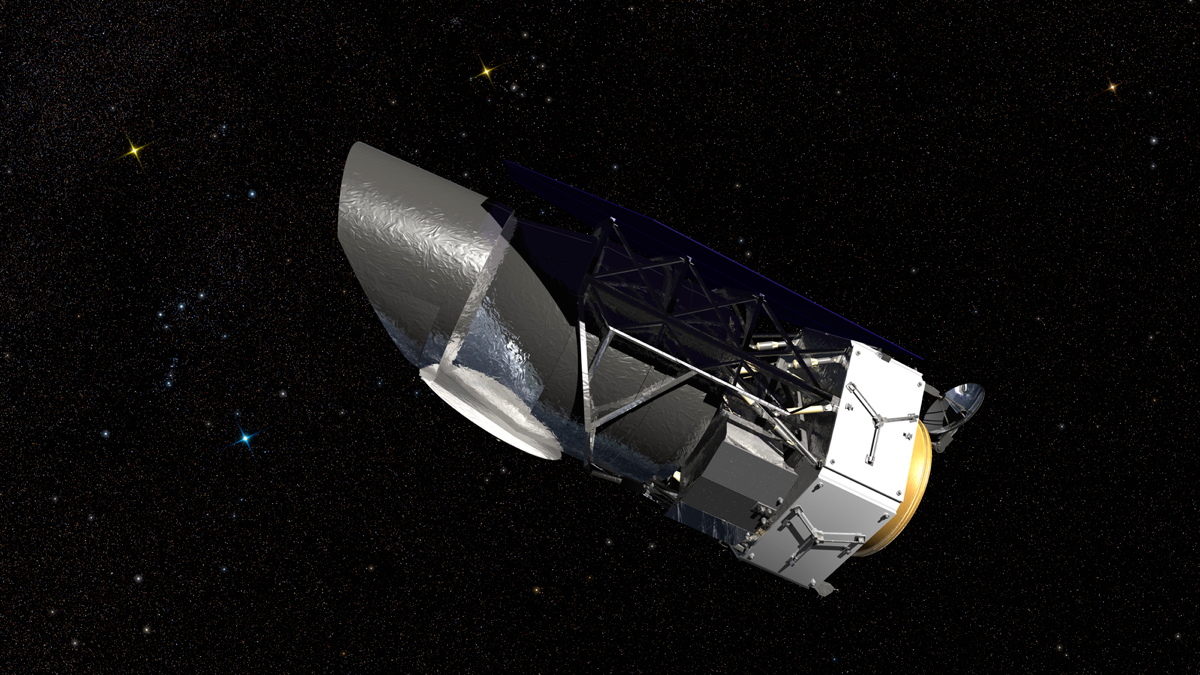Trump's 2020 NASA Budget Would Cancel Space Telescope, Earth Science Missions (Again)

The Trump administration's federal budget request for 2020 proposes the cancellation of three NASA science missions: the Wide-Field Infrared Survey Telescope (WFIRST) and two Earth science missions.
This isn't the first time the Trump administration has tried to nix WFIRST, a $3.2 billion flagship-class astrophysics mission that has already had to grapple with budget cuts. In its fiscal year 2019 budget proposal, the Trump administration sought to end that mission along with five other Earth science missions — but the Senate voted to give WFIRST the funding it needed to stay on track for a launch in 2025.
According to NASA's summary of the budget request, the Trump administration is proposing "to terminate the WFIRST mission and instead focus on completing the delayed James Webb Space Telescope," another flagship-class project that is over budget and behind schedule.
Related: NASA Weighs Delaying WFIRST to Fund JWST Overrun
Now the administration seeks to cut funding for the Plankton, Aerosol, Cloud, ocean Ecosystem (PACE) mission and the Climate Absolute Radiance and Refractivity Observatory (CLARREO) Pathfinder instrument that NASA planned to send to the International Space Station.
PACE and CLARREO were two of the five Earth science missions that also escaped the chopping block last year. Congress voted to fund them after President Trump's 2019 budget request suggested NASA terminate them. Both were top-tier recommendations from the National Research Council's 2007 Earth Science decadal survey.
On the other hand, the administration is now proposing to restore funding to two other Earth science missions that it tried to axe last year: The Deep Space Climate Observatory (DSCOVR), a satellite that monitors climate and space weather; and the Orbiting Carbon Observatory 3 (OCO-3), an instrument that would study the distribution of carbon dioxide on Earth while mounted outside of the International Space Station.
Get the Space.com Newsletter
Breaking space news, the latest updates on rocket launches, skywatching events and more!
With the agency's renewed focus on sending astronauts back to the moon and ultimately to Mars, the new budget request includes $10.7 billion for NASA's "exploration campaign," which includes funding for the Space Launch System megarocket, a lunar space station and technologies needed to build a human outpost on the lunar surface.
- NASA Is Finally Funding a Mars Sample Return Mission, But Details Are Slim
- Cutting NASA Science Missions 'Can Set a Dangerous Precedent,' Congressman Warns
- Astronomers Will Fight to Save WFIRST Space Telescope from Being Axed
Email Hanneke Weitering at hweitering@space.com or follow her @hannekescience. Follow us on Twitter @Spacedotcom and on Facebook.
Join our Space Forums to keep talking space on the latest missions, night sky and more! And if you have a news tip, correction or comment, let us know at: community@space.com.

Hanneke Weitering is a multimedia journalist in the Pacific Northwest reporting on the future of aviation at FutureFlight.aero and Aviation International News and was previously the Editor for Spaceflight and Astronomy news here at Space.com. As an editor with over 10 years of experience in science journalism she has previously written for Scholastic Classroom Magazines, MedPage Today and The Joint Institute for Computational Sciences at Oak Ridge National Laboratory. After studying physics at the University of Tennessee in her hometown of Knoxville, she earned her graduate degree in Science, Health and Environmental Reporting (SHERP) from New York University. Hanneke joined the Space.com team in 2016 as a staff writer and producer, covering topics including spaceflight and astronomy. She currently lives in Seattle, home of the Space Needle, with her cat and two snakes. In her spare time, Hanneke enjoys exploring the Rocky Mountains, basking in nature and looking for dark skies to gaze at the cosmos.









